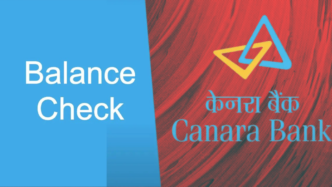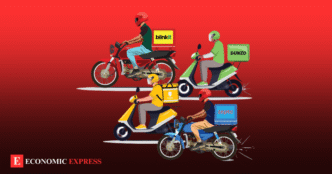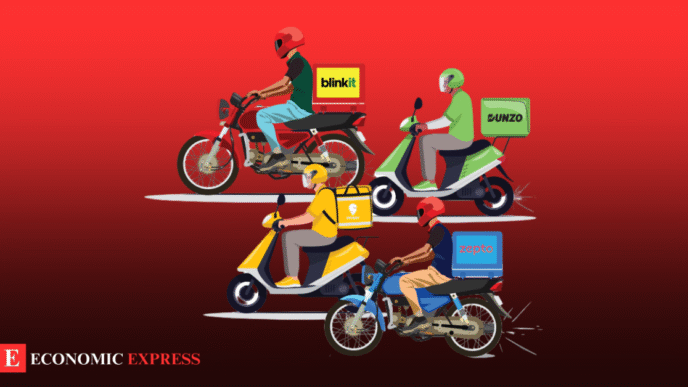India’s e-commerce landscape is witnessing a dramatic shift, largely driven by the rapid emergence of quick commerce (q-commerce)—which delivers goods in the 10–30-minute range. Local startups like Zepto, Blinkit (Zomato), and Swiggy Instamart are changing what convenience looks like while mounting pressure on global players like Amazon and Walmart (Flipkart) to re-evaluate their offerings.
This article explores:
✔ How Indian q-commerce startups are ahead of global players?
✔ Future of e-commerce in India post-quick commerce boom?
✔ How Amazon and Walmart are fighting back
✔ Key challenges and opportunities in this hyper-competitive market
1. Growth of Quick Commerce in India
What is Quick Commerce?
Quick commerce—aka q-commerce for short—is different from traditional e-commerce. Quick commerce is an ultra-fast delivery scheme for groceries, medicines, electronics, and daily necessities where customers can get anything delivered within 10-30 minutes. This is different from traditional e-commerce (1-7 days) since quick commerce utilizes dark stores (micro-warehouses) that typically keep products in a footprint closer to the customer, making it possible for customers to get their packages at breakneck speed.
| Company | Market Share(2025) | Delivery Time | Key Strength |
| Blinkit (Zomato) | 45% | 10-20 mins | Largest dark store network |
| Swiggy Instamart | 27% | 15-45 mins | Leverages Swiggy’s delivery fleet |
| Zepto | 21% | 8-10 mins | Fastest delivery in metros |
| BB Now(BigBasket) | 7% | 30-45 mins | Strong grocery supply chain |
(Source: India Briefing, Mordor Intelligence)
Why Are Indian Startups Succeeding?
- Hyperlocal Dark Stores: Q-commerce players use micro-fulfilment centers in a 2 km radius of their customers, leading to lower delivery times than Amazon’s centralized warehouses.
- AI & Data Analytics: Predictive algorithms recommend the demand of the product, optimize routes, and reduce wasted supply.
- Aggressive Discounts & Convenience: Millennials and Gen Z prefer convenience and instant gratification over slow speed and price sensitivity.
- Pandemic Boost: The pandemic (COVID-19) accelerated demand for contactless deliveries. The most notable demand was in grocery delivery service.
2. The Future of E-commerce
How Q-Commerce is re-defining Indian Retail?
- From 1-hour delivery to 10 minutes – it seems that consumers are now expecting near-immediate fulfillment, so much so that even Amazon is currently testing 15-minutes grocery deliveries in India .
- Kirana stores are in decline – with small retailers unable to compete on speed with q-commerce (hence the rise of the Dunzo x Kiranas partnership), some have even shut down .
- Delivering more than products – today, q-commerce delivers electronics (the iPhone 16 recently listed on Blinkit), cosmetics, medicinal products, etc.
Can Traditional E-commerce Giants Adapt?
- Amazon Response: Testing 15 minute deliveries and Drone Technology (MK30 drone) to compete
- Walmart’s Flipkart: Launched quick commerce services in 20 cities but is behind Blinkit/Zepto .
- Reliance’s JioMart: leveraging offline kirana stores for last mile delivery and merging online + offline (O2O) .
Key Lessons for the Broader E-commerce Industry
✔Consumers prioritize convenience over discounts.
✔ Hyperlocal fulfillment beats massive warehouses.
✔ Frequent deliveries increase carbon footprint & packaging waste .
3. How Amazon & Walmart Are Fighting Back Against Q-Commerce Disruption
Amazon’s Counter-Strategies
- 15-Minute Grocery Delivery Trials in select Indian cities .
- Drone Deliveries: Testing MK30 drones (approved by FAA) for small packages.
- Partnerships with Local Sellers: Complying with India’s FDI rules while expanding reach.
Walmart’s Flipkart Playbook
- Quick Commerce Push: Entered q-commerce in 20 cities, but struggles against Blinkit/Zepto .
- Focus on Tier-2/3 Cities: Where q-commerce penetration is still low .
- IPO Delayed to 2026: Due to regulatory hurdles and q-commerce competition .
Will Global Giants Win?
- Advantage Local Startups: Better understanding of Indian consumer behavior, cheaper labor, and agile operations.
- Advantage Amazon/Walmart: Deep pockets, global tech, and existing logistics networks.
Verdict: The battle is far from over, but Indian q-commerce startups currently hold the edge in speed and hyperlocal execution.
FAQs on Quick Commerce in India
1. What is quick commerce?
Quick commerce (q-commerce) is an e-commerce model delivering goods within 10-30 minutes, mainly groceries, medicines, and essentials, via dark stores .
2. Who are the top q-commerce players in India?
Blinkit (Zomato), Swiggy Instamart, Zepto, and BB Now (BigBasket) dominating with ~90% market share.
3. How is quick commerce affecting Amazon & Walmart?
They’re struggling to match local startups’ speed, forcing them to test 15-minute deliveries, drones, and Kirana partnerships.
4. What are the biggest challenges for q-commerce?
- High operational costs (dark store rentals, delivery workforce).
- Sustainability issues (carbon emissions, plastic waste).
- Regulatory scrutiny (predatory pricing concerns) .
5. Will quick commerce replace traditional e-commerce?
No, but it’s reshaping expectations—consumers now demand same-day or instant delivery even from Amazon/Flipkart .
The Q-Commerce Revolution is Just Beginning…
The quick commerce market in India, which is expected to reach $5.5B by 2025, is redefining the e-commerce game. Blinkit and Zepto are the pace leaders, but Amazon and Walmart are rushing to make a comeback with technology and cash. The big winners? Consumers who have not experienced this level of speed and convenience ever before.
Final Thought: When looking forward to the future of Indian e-commerce, it won’t be about who sells the most; it will be about who delivers the fastest.













